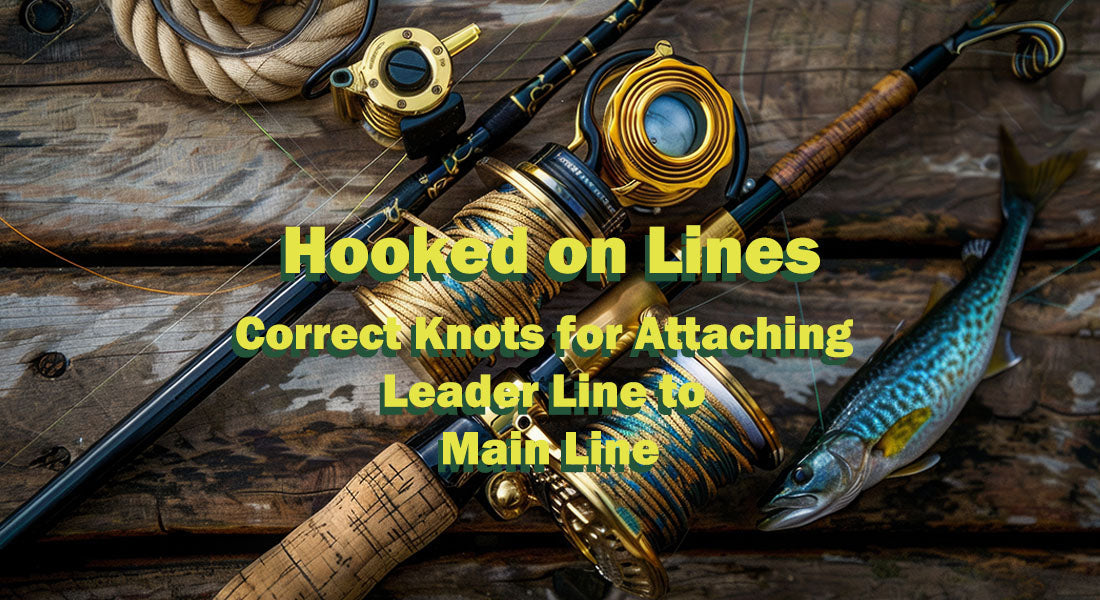Welcome to the next instalment of our Hooked on Lines series, where we help you build better rigs, one cast at a time. In this edition, we’re focusing on a skill every angler needs to master - tying a proper leader knot. Whether you're casting for distance or pulling fish through snags, joining your main line to your leader line securely is crucial for success on the water.
A leader knot is a simple but strong knot that gets the job done, every time.
Why You Need a Leader Knot
Before we get into the step-by-step, let’s quickly recap why this matters. As covered in our previous article, your main line is the thinner line on your reel, designed for long casts and greater spool capacity. The leader line, on the other hand, is a thicker, more abrasion-resistant line that helps absorb the shock of casting and provides extra strength when pulling fish through rough or rocky areas.
To fish effectively, you need to join these two lines securely, and that’s where a good leader knot comes in.
How to Tie the Leader Knot: Step by Step
Here’s a quick and reliable method for tying your leader line to your main line.
-
Create a Double Loop
Start by making a small loop in your main line. Then fold it over again to form a double loop. This loop is where your leader will pass through. -
Thread the Leader Line
Take your leader line and push it through both loops. Once it’s through, pull the loop tight around the leader line. This secures the leader in place and creates the foundation of the knot. -
Wrap the Leader Line
Now, take the loose end (tag end) of your leader line and wrap it around both strands of the main line. Do this three times to ensure a good hold. -
Finish the Knot
After wrapping, take the tag end of your leader and bring it up through the loop from the bottom. You’ll see one half of the knot is made of your main line (double strand) and the other half is your leader. -
Pull It Tight
Wet the knot slightly to reduce friction, then pull all four strands (both parts of the main line and the leader line) tight together. The result? A small, neat, and strong leader knot that’s ready for action. -
Trim the Tag Ends
A good knot isn’t just strong, it’s clean. Cut both tag ends close to the knot. This helps reduce resistance as the knot passes through the eyes of your rod when casting.
When to Use This Knot
This simple leader knot is ideal for:
- Bank anglers looking to make long casts
- Specimen anglers needing abrasion protection in snaggy waters
- Any setup where a leader is used to reduce line stress or improve durability
It’s quick to tie, reliable under pressure, and compact enough to pass through rod guides with ease.
Whether you’re new to angling or an experienced caster, mastering a good leader knot is a small skill that makes a big difference. It gives you the confidence to cast harder, fight longer, and fish smarter, knowing your rig is as strong as it should be.
Impala Angling Club has been at the forefront of angling since the 1960s. The club and its members are family-oriented and passionate about growing the sport, particularly among the community’s youth. Impala Angling Club consists of various previous and current provincial and national anglers within the club. It’s the gateway to representing a province or a country.

